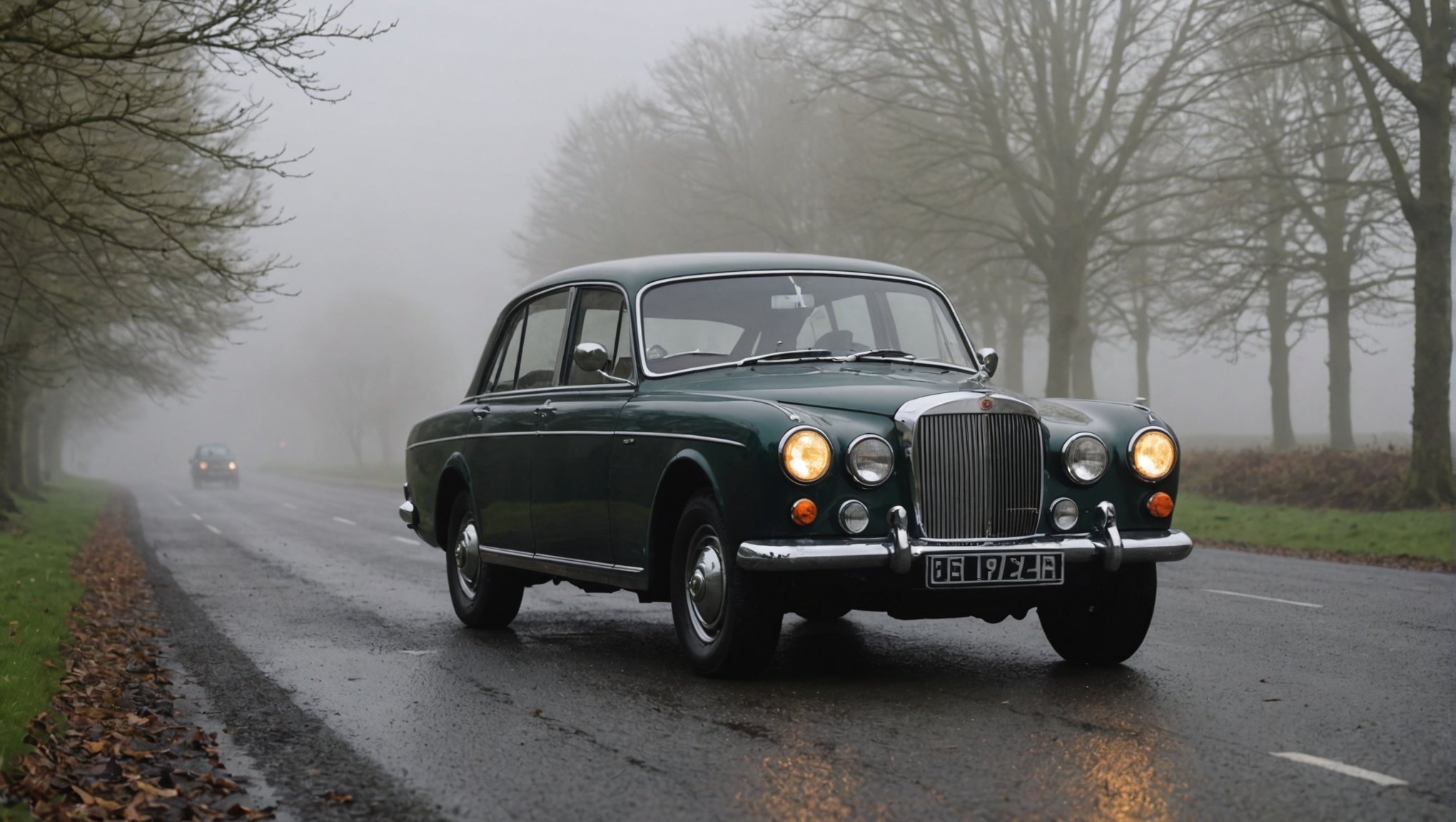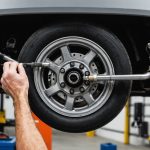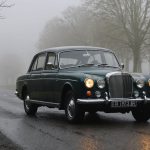Fog can impair visibility drastically, posing challenges for drivers of classic UK vehicles. These vintage cars often lack modern safety features, making it essential for drivers to adapt their strategies. Discover practical tips and techniques to enhance visibility in fog, ensuring safer travels while preserving the charm of classic motoring. From headlight adjustments to alternative signaling methods, this guide empowers drivers to navigate foggy conditions effectively, maintaining confidence on the road.
Understanding Fog and Its Impact on Driving
Fog can significantly impair visibility, making driving conditions hazardous. When fog forms, tiny water droplets or ice crystals suspend in the air, reducing the clarity of the road ahead. This limited visibility can make it difficult for drivers to see road signs, other vehicles, and potential obstacles, increasing the risk of accidents.
This might interest you : Mastering Your British Touring Motorcycle: Ultimate Guide to Rear Suspension Setup for Comfort on Long Rides
The Dangers of Fog Driving
Statistics indicate that fog is a leading cause of weather-related accidents. According to recent studies, fog accounts for a considerable percentage of collisions, particularly in regions prone to dense fog conditions. Understanding the density and duration of fog is crucial for ensuring fog driving safety. Dense fog can reduce visibility to mere meters, while prolonged fog conditions can exacerbate driver fatigue and disorientation.
Strategies for Safe Fog Driving
To enhance fog driving safety, it's essential to adjust driving habits. Reducing speed and increasing the following distance between vehicles can help mitigate the risk of accidents. Using fog lights, if available, and relying on road markers rather than high beams can also improve navigation through foggy conditions. By being aware of the impact fog has on visibility and adopting appropriate safety measures, drivers can better protect themselves and others on the road.
Also read : Top Strategies to Cut Carbon Emissions in Classic UK Vehicles: A Path to Eco-Friendly Driving
Legal Requirements for Driving in Fog in the UK
Navigating the roads in foggy conditions requires adherence to specific UK driving regulations. It's essential to understand the rules concerning fog lights. In the UK, fog lights should only be used when visibility is seriously reduced, typically when you cannot see more than 100 meters ahead. Using fog lights improperly, such as in clear conditions, can result in penalties.
Overview of Fog Light Regulations
Fog lights are crucial for ensuring safety during foggy weather. The law mandates their use only when visibility is severely limited. Using them inappropriately can lead to dazzling other drivers, which is why their use is restricted to specific conditions.
Penalties for Non-Compliance
Failing to comply with fog light regulations can result in fines. Drivers caught using fog lights improperly may face penalties, including fines of up to £50. It's important to follow these rules to avoid unnecessary legal consequences.
Recommendations for Ensuring Legal Compliance
To ensure compliance with UK driving regulations, drivers should:
- Familiarise themselves with visibility guidelines.
- Use fog lights only when necessary.
- Regularly check vehicle lights to ensure they function correctly.
By adhering to these guidelines, drivers can maintain safety and avoid penalties.
Choosing the Right Fog Lights for Classic Vehicles
Selecting appropriate fog lights for classic cars can enhance both safety and aesthetics. These vehicles often require specific types of fog lights to match their unique design and electrical systems.
Types of Fog Lights Suitable for Classic Vehicles
Classic cars can benefit from both LED and halogen fog lights. LED fog lights are energy-efficient and long-lasting, providing bright illumination with minimal power consumption. Halogen lights, on the other hand, offer a warm glow that complements the vintage aesthetic of classic cars.
Installation Tips for Optimal Performance
Proper installation is crucial for optimal performance of fog lights in classic vehicles. Ensure that the fog lights are mounted low and aimed correctly to avoid dazzling other drivers and to maximise visibility. It's also essential to check the compatibility of the fog lights with the car's electrical system, as older models may require additional modifications.
Comparison of LED vs. Halogen Fog Lights
When comparing LED vs. halogen fog lights, consider factors such as brightness, energy consumption, and longevity. LEDs are typically brighter and more durable, while halogen lights are more affordable and easier to replace. The choice ultimately depends on the driver's preference for style and functionality.
Maintenance Tips to Ensure Visibility
Proper classic vehicle maintenance is essential for ensuring optimal visibility, especially in foggy conditions. Regular checks of headlights and fog lights are crucial to maintain their effectiveness. Over time, lights can become dim due to dirt accumulation or bulb degradation, impacting visibility and safety.
Importance of Regular Headlight and Fog Light Checks
Frequent inspections help identify issues like misalignment or faulty bulbs. Aligning lights correctly ensures they illuminate the road without blinding other drivers. Cleaning the lens regularly prevents dirt build-up, which can significantly reduce light output.
Recommended Maintenance Routines for Classic Vehicles
- Inspect lights monthly for any signs of wear or damage.
- Clean lenses with a soft cloth and mild cleaner to remove grime.
- Replace bulbs promptly if they appear dim or flicker.
Common Issues That Affect Light Effectiveness
Classic vehicles often face challenges like electrical system compatibility, which can affect light performance. Corrosion in wiring or connections is another common issue. Regular maintenance helps prevent these problems, ensuring that lights function optimally. By adhering to these tips, classic car owners can maintain visibility and enhance driving safety.
Effective Driving Techniques in Fog
Driving in fog requires adapting your approach to ensure safety. Techniques for safe navigation during fog are essential for reducing risks. Begin by slowing down to give yourself more time to react to any obstacles. Maintaining a safe distance from the vehicle ahead is crucial, as it provides a buffer zone in case of sudden stops.
The importance of maintaining safe distances cannot be overstated. Fog significantly reduces visibility, making it difficult to judge distances accurately. A greater following distance allows for more reaction time, helping to prevent collisions.
When it comes to strategies for using headlights effectively, use low beams or fog lights, as high beams can reflect off the fog, reducing visibility further. Fog lights are designed to cut through fog and illuminate the road, improving navigation. If your vehicle is equipped with fog lights, ensure they are properly aligned to avoid dazzling oncoming drivers.
Incorporating these techniques into your driving routine can significantly enhance safety during foggy conditions. By being proactive and cautious, drivers can navigate through fog with greater confidence and security.
Visibility-Enhancing Accessories for Classic Vehicles
Classic vehicles, while charming, often lack modern safety features. To improve visibility and safety, consider incorporating accessories for classic cars. These enhancements can significantly aid in navigating foggy conditions and other low-visibility scenarios.
Reflective materials and decals are among the most effective accessories. They increase a vehicle's visibility to others, especially in dim lighting. Reflective strips can be applied to the car's rear and sides, while decals can be strategically placed to catch headlights, alerting other drivers to your presence. These simple additions can make a substantial difference in avoiding accidents.
For additional safety, consider equipping your classic car with modern lighting solutions. LED light strips, for instance, offer bright and energy-efficient illumination. They can be installed on bumpers or around the vehicle's perimeter, providing extra visibility without altering the car's vintage aesthetic.
Recommendations for additional safety gear include high-visibility vests and warning triangles. These are invaluable in case of breakdowns or emergencies. Keeping a set in your car ensures you're prepared for unexpected situations, enhancing both your safety and that of other road users. By integrating these accessories, classic car owners can enjoy their vehicles with increased confidence and security.
Expert Insights and Testimonials
Driving safety testimonials from classic vehicle enthusiasts and experts provide invaluable insights into navigating foggy conditions. Enthusiasts often share real-life experiences, highlighting the challenges and solutions they have encountered. For instance, one classic car owner recounted a foggy drive through the English countryside, emphasising the importance of maintaining a calm and focused demeanour.
Interviews with Classic Vehicle Enthusiasts and Experts
Interviews reveal that many enthusiasts rely on a blend of traditional driving techniques and modern safety accessories. An expert in classic car restoration noted that integrating LED light strips can significantly enhance visibility without compromising the vehicle's vintage appeal.
Real-Life Experiences of Driving in Fog
Real-life experiences underscore the unpredictability of fog. Drivers often mention the sudden onset of dense fog and the disorientation it can cause. A testimonial from a seasoned driver highlighted the effectiveness of using road markers as guides, a technique that has proven successful in maintaining orientation during thick fog.
Tips from Safety Instructors on Fog Navigation
Safety instructors recommend several practical tips for fog navigation. These include using low beams or fog lights to avoid glare and maintaining a steady, reduced speed. Their advice often centres on the importance of staying alert and adapting quickly to changing visibility conditions.
Utilizing Technology to Improve Visibility
Incorporating technology for driving safety can significantly enhance visibility, especially in foggy conditions. Modern advancements offer drivers tools to navigate safely and efficiently, reducing the risks associated with poor visibility.
Overview of Modern Technologies Aiding Visibility
Several technologies have been developed to aid visibility in adverse weather. Adaptive headlights adjust their intensity and direction based on driving conditions, providing optimal illumination without blinding other drivers. Rain-sensing wipers automatically activate and adjust their speed according to the intensity of precipitation, ensuring a clear windshield at all times.
Benefits of GPS and Navigation Tools in Fog
GPS and navigation tools are invaluable in foggy conditions. They provide real-time updates on road conditions and traffic, allowing drivers to make informed decisions. Turn-by-turn navigation ensures you stay on course even when road markers are obscured by fog. Voice guidance further enhances safety by allowing drivers to keep their eyes on the road.
Recommendations for Apps that Enhance Driving Safety
Several apps are designed to enhance driving safety. Waze offers community-driven alerts about road conditions, while AccuWeather provides weather forecasts and warnings. These tools equip drivers with vital information, enabling safer journeys through challenging weather conditions.
Visual Aids for Enhanced Understanding
Utilising diagrams for driving safety can significantly improve comprehension of fog driving challenges. Visual aids offer a clear representation of complex concepts, making it easier for drivers to understand and implement safe driving practices. For instance, a diagram illustrating the correct following distance in fog can be more effective than a textual explanation alone.
Importance of Visual Aids in Understanding Fog Driving
Visual aids simplify the process of grasping essential safety measures. By depicting scenarios such as the proper use of fog lights or the ideal lane positioning, diagrams provide a visual reference that enhances retention and recall during real-life driving situations.
Examples of Diagrams Illustrating Safe Driving Techniques
Consider diagrams that demonstrate safe driving techniques in fog. These might include visual representations of vehicle spacing, the impact of reduced speed on reaction times, and the correct alignment of fog lights. Such diagrams serve as quick reference tools, reinforcing the importance of adapting driving habits to maintain safety.
Suggestions for Creating Your Own Visibility Checklists
Creating personalised visibility checklists can further aid in preparation for foggy conditions. Include items like checking fog light functionality, ensuring windshield clarity, and verifying tyre treads. These checklists act as practical reminders, ensuring that all necessary precautions are taken before embarking on a journey in foggy weather.
















